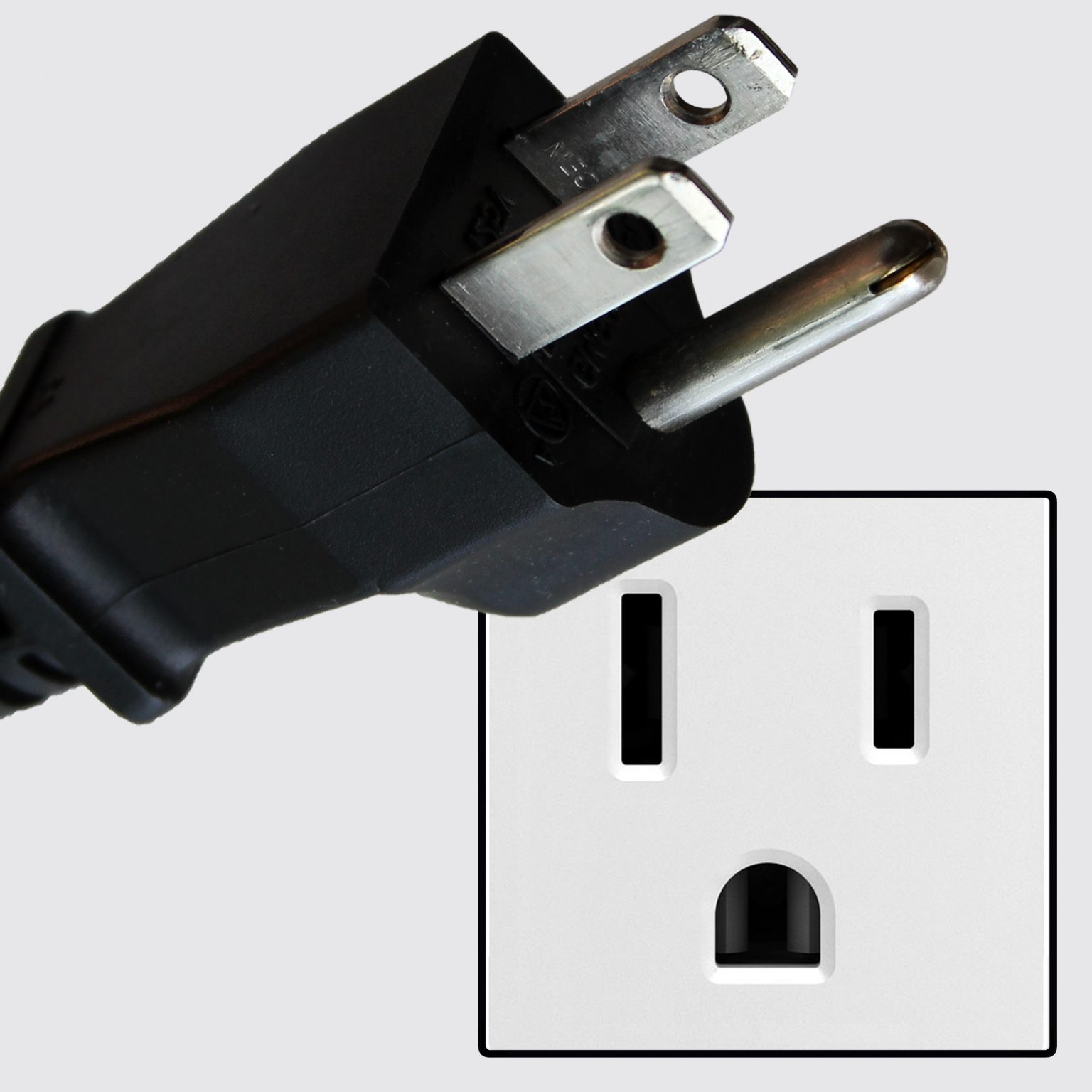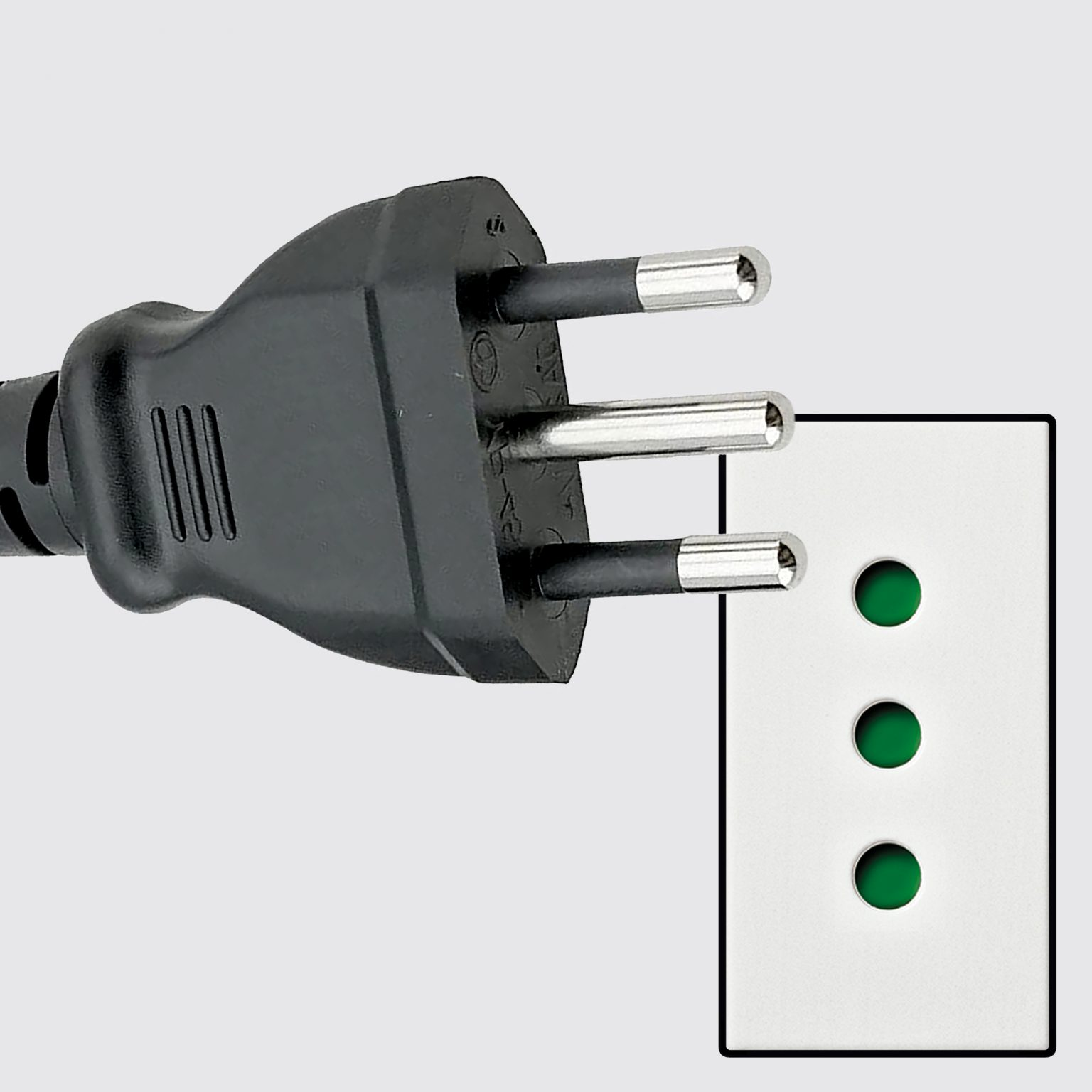They’re like that in this apartment we’re renting and I keep seeing them elsewhere. I don’t get it.
in America many houses have the on off switches with the lights on the other side of the room for lamps etc
To turn shit on or off
For safety I guess?
I don’t get how that makes it safer.
So when the dumb person tries to insert a fork in the plug, they don’t die electrocuted.
Have you seen the list of safety features on UK plugs and sockets? The sockets have shutters in them that prevents anything being inserted into the live or neutral sockets unless the (longer) earth pin of a matching plug is inserted first.
Having said that, I agree: seems to be a belt-and-braces approach. No downsides.
And it allows you to cut power to an appliance without having to remove the plug.
Sockets with flaps are code in the us too and have been for a while.
Isn’t the USA 2 pin for many outlets, though. So there is no earthing. The uk socket requires the earth connection to be made by the longer earth pin on the plug before the flaps will open.
yes but you have to open both shutters at the same time. The ground doesn’t have a shutter.
In my work, I’ve learned that when you see a safety measure that looks overkill and that “no one can’t be that stupid” to do what the measure keeps you from doing is because, in fact, someone was that stupid.
Warning signs and safety regulations are written in blood. I call the certificates of Darwin awards.
There are already slats so the only hole you can get a fork into is the earth, unless you’ve already got something convincingly shaped like an earth pin in the earth hole to open the slats over the live and neutral. If you’re going to that much effort to zap yourself, the switch isn’t going to be much of a hurdle.
I’d suspect that it’s largely because it’s more convenient to have a switch than to unplug things and plug them back in again, especially as our plugs are a nightmare to step on to the point that Americans complaining about stepping on lego seems comical to anyone who’s stepped on lego and a plug.
Some of our sockets now have interlock type slats. Not only do you need to insert the earth pin first, but you also have to insert the live and neutral together. Now, even if you wedge the earth open, you still can’t insert a fork into the live.
Not positive but those could be GFI outlets.
That’s what I thought at first, but it’s literally every socket in this building both inside the apartment and outside in the hallways, and I keep seeing it in other buildings too.
Yup, they are the standard.
Would be fun to see some stories about you discovering things in the UK and how they are so different than in the US!
I am doing that, but I’m sort of putting them in appropriate threads. Otherwise I’d be writing a novel. Or I suppose creating a Flying Squid in Britain community. Maybe if I get less exhausted at some point I’ll post something long.
All modern wiring in the UK has every socket in the building connected via RCD (the more common name for GFCI outside America), but they’re usually in the main fusebox/consumer unit rather than individually per socket. These are just normal on/off switches for the convenience of being able to turn things on and off.
That’s a convenience we could all use, pretty crafty!
Saw a video of how the Japanese wire their panel’s and thought it was pretty genius.
https://www.youtube.com/watch?v=tqClY6PDCW0
Is it similar across the pond? Or is it like here where you can GFCI the panel through a breaker?
the UK power grid is weird. mostly due to echoes of the war. used to be that, to save copper, the entire house and sometimes multiple houses on a street would be wired as one big loop of wire, no fuse box or anything. that’s where the individually fused and switched sockets come from. then, since it turned out to be quite a good idea for safety, they kept doing it.
Why are people saying this?
I’ve lived in multiple UK houses and never once seen a socket with a fuse. Are you saying this was change way way back in the day?
All houses have fuse boxes (which then got upgraded to circuit breakers). Not one fuses in sockets. Would be a fucking nightmare to take the socket off and change a fuse.
The fuse is actually in the UK plug (the big brick-like thing with the wire on it), not the socket. But yes, it’s a thing, and most of the rest of the world considers it overkill. Also a lot of cheap junky equipment (ironically the stuff where you’d most want the fuse) omits the fuse in the plug, go figure.
Yea I know, I’ve wired a plug.
Never seen a fuse in a socket though. That comment is completely wrong and yet it’s the most up voted reply.
Never seen a house without a fuse box either.
Didn’t the uk used to have appliances without plugs that you’d need to wire yourself If inrecalling that Tom Scott video correctly
No fuses in the switch box though, it’s a box of circuits breakers
The used to be - I had a flat that used an old style fused breaker. Fun times trying to replace a fuse when it had blown…
Lol yeah can only imagine what playing ‘hunt the bad device’ would’ve been like back when those boxes had actual fuses on them. (That’s the game where the main circuit breaker gets tripped and you have to figure out first what ring it’s on, and then which specific item is tripping it)
Yea I know, I said that.
People still call them fuse boxes though.
sloppy wording, i meant “switched sockets and fused plugs”.
When I bought the apartment I’m living in, the previous owner had refused all modernisation, even legal ones (he had mental problems), so the appartment had the original 1 hot wire going everywhere, you just “tapped” off power where you wanted to to ground. 1959 era.
So that switch will trip like a breaker?
No - there’s fuses in the plugs themselves, the switch is largely for convenience and safety - if you want to unplug something broken and potentially live, it’s much safer to switch it off at the wall than risk a shock given the current limit is on the breaker is so high
Are folks able to replace the fuses without exposing live parts? I totally get the safety angle.
fuse is in plug and accessible only when plug is disconnected
it’s also a very weird thing because fuses are supposed to protect what is downstream of them. so effectively fuse in plug protects cord and appliance only, not the wires in the wall. there’s breaker box for this
It is safer for the fuse to be in the plug for those people who think they are electricians and end up causing house fires or bzzzt’ing themselves
Whoa. Thanks all!
The screw to get to it is supposed to be on the side that would be facing the wall when plugged in so no
eastern block solution to copper shortages was to wire houses with aluminum instead of copper. this avoided all that bizarre bullshit that brits do, and in principle it’s a good idea since aluminum is used for big time power distribution as well. this worked pretty well until it was noticed that under some conditions hot spots can form on connections over time, requiring replacement of connectors. it’s still legal to use aluminum wires in some places, but copper is more common now
This is the answer. When all sockets are connected to one big loop, there’s fuses in each socket to prevent a device from screwing with the whole system.
The old Ring Circuit
Sorry but I’m going to need a source on that because there is no evidence of that being the reason UK plug sockets have switches
Other countries have switches on their sockets, Australia being one because I live here
Switches on sockets do make a ton on sense though for safety reasons for example if you need to quickly isolate electricity from the switch and the breaker hasn’t done anything
Switches also prevent arcing when you pull out a plug if an appliance doesn’t have an off switch and you can switch something off that you use commonly say a kettle but don’t unplug because you use it commonly so theirs less chance of an electrical fault happening while no one is there and its also the same reason I’ll demand an isolation switch be installed on electric stoves just incase the dail on the stove fails and the stove turns on
looking for a source is not hard. anyone can do it.
switches are not required by the bs1363 standard. the provision for them only arrived in the 1960s. there.
This isn’t strictly true. Most houses built between WWII and the '90s were built with sockets that didn’t have switches on them. It was only later safety regulations / suggestions that made the switches preferable.
Where I live was built in the late '80s right before switched sockets became more common. All the original sockets have no switch. Some in the kitchen have switches, but it’s clear these were added at a later date.
I’m not sure of the exact rulings and where and when a socket must have a switch, but you can still find switchless sockets for sale at the sorts of retailers who sell those sorts of things, so there are definitely places where those sockets are still allowed.
I thought that’s building code, literally never seen any other outlets in the UK, as well as in Malaysia where they adopted the system. Though why it is or became code, I’ve no idea.
Safety, easier to switch things off without unplugging them. Why not have one if it’s more convenient? Not all of them have switches though.
It made a lot more sense when things didn’t have their own power switches but…what does that apply to anymore? How many devices do you own that are powered off exclusively by unplugging it? Why pay for the manufacturing time and material to add a switch if nothing uses it anymore?
There are still times where it’s convenient. I have some display cases with integrated lighting and the inline switches are incoveniently between the case and the wall so its super handy to turn it on and off at the plug.
Being able to turn things off at the plug also reduces standby/phantom power when things are in sleep, which for some devices adds up more energy usage than you’d think.
Sometimes when people go on holiday for two weeks they like to disconnect the electrical items in their house for safety. With switched sockets you can just turn them off instead.
I’m sure I could live just fine without switched sockets, but it’s convenient they are there.
Ah, now all of that makes sense! Thank you!
Fridge, washing machine, dishwasher, television, phone charger, robovac dock, lamps, computer monitor, aquarium pump… I could go on.
It’s not strictly necessary, but it’s a convenience.
Most of those have power buttons and, aside from the charger and vacuum, those things are supposed to stay on.
I meant more things like lamps that you actually turn on and off…And the majority lamps have switches nowadays, I’m not sure why you included it on your list
We’re getting into the weeds a little bit here, but there’s a lot of things that have power buttons that will put the thing into standby, not off. I’ve often done a ‘hard reset’ on my ‘smart’ tv when it starts acting up, just gotta cut the power.
It’s a small convenience, but it’s nice. I’ll happily pay the extra three cents in manufacturing costs for something that lasts decades and may be occasionally mildly helpful.
Being a uk person its cause they can & its also in to building / electric code. Its just a switch that breaks the live leg, stops sparking when plugging in stuff.
Your sockets spark when you plug something in?
All will if there is a load. Doesn’t matter ac of dc or even load. Plug an ethernet cable in and there will be a spark.
Most of the time the spark is tiny and you need a good lab to measure it though.
No, unless something is very wrong. I don’t know if that was maybe a bigger problem with older devices though. I remember being taught to turn the socket off before plugging things in or taking them out when I was a kid
I’ve definitely had that happen to me, sort of at random, in the U.S.
But it doesn’t seem to have any effect. It’s not like a gigantic spark and it’s pretty contained.
Oh I’ve never seen that in the US, maybe I just didn’t notice
Home electricity in North America has roughly half the voltage as elsewhere in the world, and double the voltage is double the arcing potential, so that figures.
Laptop power bricks is probably where I see it most. Or if you plug in something with a motor already switched on. Listen for a soft popping noise if you plug in a big power brick.
You’re right, now that I think about it. Laptop power does it more than anything else.
Many, many big power-smoothing capacitors inside those jumping from 0 to 120V in a microsecond, that’s why. The better-smoothed the power supply, the more capacitors and the bigger the sparks tend to be, although some really high quality ones put most of them behind inrush-current limiters to reduce the sparking, but that can also marginally reduce efficiency. High power electronics are always a bit of a tradeoff. The problem is that capacitors charge and discharge almost instantly in most cases, and when empty they act like a short circuit until they’re filled, so they can create some pretty big sparks, even though the actual energy going in is minuscule by any reasonable measurement. It’s almost like a static shock, huge spark, tiny energy.
Some motors will also spark badly when disconnected, but the reason is slightly different. They have a huge electromagnetic field which suddenly fills or collapses and that inductance in the coils can draw a lot of amps on startup and generate some pretty high voltages, more than enough to spark across the gap. Like the capacitors, they are very nearly a short circuit until they start moving.
Having grown up with it I missed those tbh. Makes saving power easier lol
Does it? Can’t you just turn off the device instead?
A lot of devices can be turned off, but they still use power. So you can waste electricity even though the devices are “off”.
Things like normal table lamps aren’t the problem, it is stuff like TVs, computers, stereos, etc.
yes.
Im from the states and live in Ireland. Here, people unplug lamps when they leave for the weekend. Dozens of times, I’ve had to plug lamps back in when coming into the office over a weekend or things like Christmas break.
I’ve also had to explain to at least 5-6 people that something that does not draw power by being plugged in, such as a toaster, electric kettle or light fixture (unlike a computerized device that has a stand-by mode) is not “wasting power” unless you unplug it or turn the outlet switch off.
I had a person at a party tell me their father was an electrician and taught her to turn the switches that lead to anything such as lamps OFF when they’re not being used because it costs electricity to “keep the wire charged”. True story.
Mainly they exist because there weren’t central fuse boxes for a while due to wartime copper shortages.
turn the switches that lead to anything such as lamps OFF when they’re not being used because it costs electricity to "keep the wire charged
Lol what a donkey. For anyone that’s unaware, your meter spins when current is flowing, when a device is actively using power. If there’s no current flowing, the meter isn’t spinning. Just because a wire has potential doesn’t mean it’s actively drawing current, it only means it’s ready to do something, and any device that has the main feeder going through a physical switch (ie no standby like a computer or tv) has zero current path when the switch is open/off. Even devices in standby are drawing such a negligible amount of power that it doesn’t matter.
My mom used to unplug everything all the time, and it took years to convince her that’s not how that works. She only finally got it when I became an electrician.
You can test this theory yourself if you have a multimeter. Select ohms/continuity, and put the leads across the two prongs. If there is a resistance value present, it will draw current. If it says OL or 0 ohms, that means open line and it won’t draw anything.
the only thing that would make a shred of sense would be reactive power from plugged but unused transformers and the like, and for this reason you should disconnect these when not in use. but the only loads of this type that matter are welders and such
Mainly they exist because there weren’t central fuse boxes for a while due to wartime copper shortages.
Someone elsewhere in the thread pointed out that the Wikipedia page for BS 1363 says they’re optional and weren’t added to the standard until 1967.
huh! shit. thanks
Safety and convenience versus the cost of including them, I expect.
The Wikipedia page for BS 1363 says they’re optional and weren’t added to the standard until 1967. I can’t recall having seen a domestic socket without one.
But it seems the only legal way to read the actual standard is to pay for it, and even the HSE website isn’t much help.
So basically, this concept was invented by a committee.
Yes. Welcome to the UK. You will need to adjust to small aggravations such as this. Good luck.
Yes, but what’s your point here? “Oh no, someone preserve us from… *checks notes* a group of subject matter experts!”?
If that annoys you for some reason, you’d best not learn how the overwhelming majority of products and services see the light of day. Rage aplenty awaits.
I didn’t have a point, I had a question. And it doesn’t annoy me, I just didn’t know why.
Why are people giving me shit for asking a stupid question in the stupid questions community? Is there a supremely stupid questions community I should have asked instead?
Your original question was answered by numerous people in the spirit of the community, so you have got best answers it can provide at the moment, but your follow-up comments suggest that you don’t think so.
But I may have misjudged your intent, as looking further I can see you’ve been replying to comments individually. My initial impression was that you were masquerading statements as questions. If I have that wrong, then my apologies.
I was genuinely trying to understand.
Everything you’d want to know about British wiring and my introduction to Tom Scott:
All plug points in India also have (regular sized, not these tiny ones) switches to control them
Huh, it’s interesting- Here the power switches are a similar size to the UK, so when I searched up a picture of the Indian switches I thought they were ridiculously giant, not like regular sized UK/Australian ones
I guess it’s just whatever you’re used to is the ‘regular’.
Are light switches the same? What happens when you have a lot of switches together, like six or eight? Do you just have really wide banks of switches?
Allows you to remove power from the plugged in device without unplugging it. This provides convenience to easily and quickly turn things on and off and prevents arcing when unplugging. 240V 13A can arc a bit, particularly if unplugged under load, or on older sockets where the contacts have worn. While a little arcing doesn’t do much damage immediately, over time it will cause pitting and make a high resistance joint that will generate heat.
The switch only disconnects the live terminal, but the neutral terminal should be similar potential to earth (depending on how the building is wired).
Truly the king of plugs and sockets. The plugs are individually fused according to the device needs, ergonomic to use and exciting to stand on.
Makes sense, American lie voltage (outlets) are 120V. 240V is considered high voltage and isn’t typically fed into residential units. Plugging anything rated for 120V into a 240V outlet is gonna be a bad time, and is why the outlets for high voltage are shaped differently.
I was gonna guess that the switches were too negate so-called vampire power, which is when a truck’s of electricity flows into appliances that are normally off. IMO that trickle is so negligible in a residence that is 6 effectively irrelevant, but that’s just here in the US. I don’t know anything about foreign electrical systems.
240 is used all the time for furnaces, driers, and increasingly EV outlet connections.
It’s just all our “normal” stuff is 120.
I wish our electric kettle outlets were 240. I’m unreasonably jealous that other places in the world can boil water faster!
I think you can have it, but you’d need to spend a pretty penny.
All it would take is calling an electrician to run the appropriate wiring from the place you want the kettle plugged in to you breaker box, connect it to the breaker box with the appropriate breaker, cap off the other end with the appropriate plug (a 240V plug does exist in America), and then buy a kettle capable of receiving the rated voltage and current and splice on the appropriate plug (because I presume you won’t find one sold with that plug).
An extremely expensive way to save maybe three minutes boiling water, but you can do it.
Allows you to remove power from the plugged in device without unplugging it. This provides convenience to easily and quickly turn things on and off and prevents arcing when unplugging.
That’s exactly what I do, because it’s more convenient than unplugging everything.
I live in South Africa, where we had rolling blackouts (called loadshedding) for a few years. It’s easier to switch everything back on when the power comes back than to plug it back into a socket without a switch, especially with my fucked up spine.
The electricity in the place I live was done poorly, so having something plugged in “live” risks a surge or something and then the appliance gets fucked and then everything smells like burnt plastic.
And that’s the best case scenario. Others have had housefires.
Also, the South African plugs aren’t pleasant accidentally to step on. It won’t pierce your foot, but it can still hurt like a motherfucker for a few seconds if you step on it in the wrong way.
Those UK plugs do look a lot more nasty to step on. I shudder at the thought.
I like the EU and US two prong cables ( 🔌?) where the prongs are parallel to the cable, but not the cables with the orthogonal prongs.
I like the EU and US two prong cables ( 🔌?) where the prongs are parallel to the cable, but not the cables with the orthogonal prongs.
Non-grounded plugs aren’t that great, though, and once you add the third prong the plug gets much less flat. Compare:


Maybe Italy and Chile have the best idea in terms of slim grounded plugs, although the lack of polarity might be a problem?

Also, IMO right-angle plugs are often better than straight ones because you can put furniture closer up against them and do so without stressing the cable.
right-angle plugs are often better than straight ones because you can put furniture closer up against them and do so without stressing the cable.
Yeah that is definitely a huge bonus. I’ve taken it for granted.
We’re slowly adopting three pronged Italian/Chilean-type plugs that will be “backwards-compatible” with the EU plugs. I have no clue about polarity or anything like that.

New sockets include em. The original three pronged socket is kind of a hazard. Kids can stick their fingers in there. Not sure how that got approved.
why would the lack of polarity be a problem? the outlets only deliver AC, and everything plugged into them are made for AC.
exciting to stand on
Thanks, I hate it.
Americans don’t have this???
Not that I have ever seen.
Not just Americans. You won’t even commonly see them in mainland Europe
Nope. We’re also on 120v so that could be part of it.
most places don’t. it’s a very british empire thing.
We just don’t unplug anything ever. We usually have an room that’s on a wall switch near the lights.
Sometimes we have specific plugs that are wired to a wall switch that can be used to turn those specific outlets on and off. All the examples I know of are for standing lamps, so they can be turned on an off like ceiling lights.
I’ve only seen this a few times, including my current house.
It’s been code for a long time that every room must have a switched lighting source, and before recessed lights became more common or if the original builder didn’t put a ceiling light or wall sconce, you’d have a switched outlet for a lamp. Typically it’s only half of one outlet though, unless your house was wired by a crackhead like mine.
Only half of one outlet? That sounds super frustrating. I think it would take me a while to discover that the random light switch that doesn’t do anything is related to the power point where only one side charges my phone.
Yeah, it makes sense from a functional standpoint, being that often you’ll only want to switch on lamp, while having full constant functionality of the other plug.
 You basically break that tab between the two screws, then wire the constant power to one, and the switch leg to the other.
You basically break that tab between the two screws, then wire the constant power to one, and the switch leg to the other.But yeah, it’s not always consistent where that outlet is located within a room. Like I have the tools to figure it out pretty quick, but you basically just have to take a lamp and plug it into each outlet with the switch off until you find it.
Yeah, I like the idea of being able to switch floor lamps and what not from the doorway. No-one likes the big light, right?
Not sure if I like it enough to implement it in my dream home though. Possibly with some kind of different shaped plug, or a colour code that matches the switch?
Not having a switched light source makes some sense as most of the rooms in my house had ceiling fans without lights installed, which we switched to fans with lights. There was an extra switch for the light in the ceiling fan that didn’t do anything until we put it in. The switches did go to the lower plug on a couple of outlets, which was fun to figure out since we hadn’t come across it before!
We also have one switch that goes to an outlet about eight foot up on a wall that I assume was for some decoration to make it easier to turn on and off.
You, ceiling fan outlets count for that requirement, though it’s entertaining when people install a fan without a light and wonder why their switch doesn’t control a light lol. Any time I install a ceiling fan outlet, we always run a 3(+ground) wire cable, two switched power legs, for independent control of lights and fan.
I am so glad they wired it for a potential future light separate from the fan!
They sure skimped on a bunch of other stuff though, like a couple bathroom lights don’t have proper mounting boxes because they didn’t put a 2x4 in the right place and are just mounted to the drywall.
Yeah that happens sometimes, although there is a possibility that a previous owner added a switch after the fact, and had to install a larger box. Some guys will screw a nail-on box to the original mounting stud, but it’s just as easy to add an old work box (the ones with the mounting wings) and call it a day.
We do have ground fault circuit interrupt (GFCI) outlets, which are required when a socket is within a certain distance of a water source but can be installed on all outlets if you want. They have a little breaker inside that trips automatically if it detects a problematic difference in current flow.
They’re not on/off switches but you could press the “test” button on the outlet to break the circuit.
I’ve also seen some whole outlets that are switched on/off from a light switch elsewhere in the room. Those are super annoying because there’s no required indication that they work that way so you get to find out for yourself.
In my little Eastern European shithole, GFCI relays are required for any apartment or house, installed to the incoming power main. Is that not a thing over there?
wikipedia says that not for a long time:
Beginning with underwater swimming pool lights (1968) successive editions of the code have expanded the areas where GFCIs are required to include: construction sites (1974), bathrooms and outdoor areas (1975), garages (1978), areas near hot tubs or spas (1981), hotel bathrooms (1984), kitchen counter sockets (1987), crawl spaces and unfinished basements (1990), near wet bar sinks (1993), near laundry sinks (2005)[26], in laundry rooms (2014)[27] and in kitchens (2023)
american electrical code has so much of weird shit that would be illegal out there, it’s dazzling. you can’t get three-phase power as a regular customer, but you can as an industrial, but only as 480V interphase. there are like 7 different mains voltages available. it would be illegal in europe to come up with something like “high-leg delta” but it’s a thing out there
deleted by creator
I remember when I was young and bending down all the time was a thing you could do painlessly. Ah, youth.
Have you tried using your toes?
You can use your toes for switches.
Not when there are no switches and you have to pull out the plug everytime you want to switch off the appliance.
deleted by creator
Big if true.
Massive if correct
Large if accurate




















